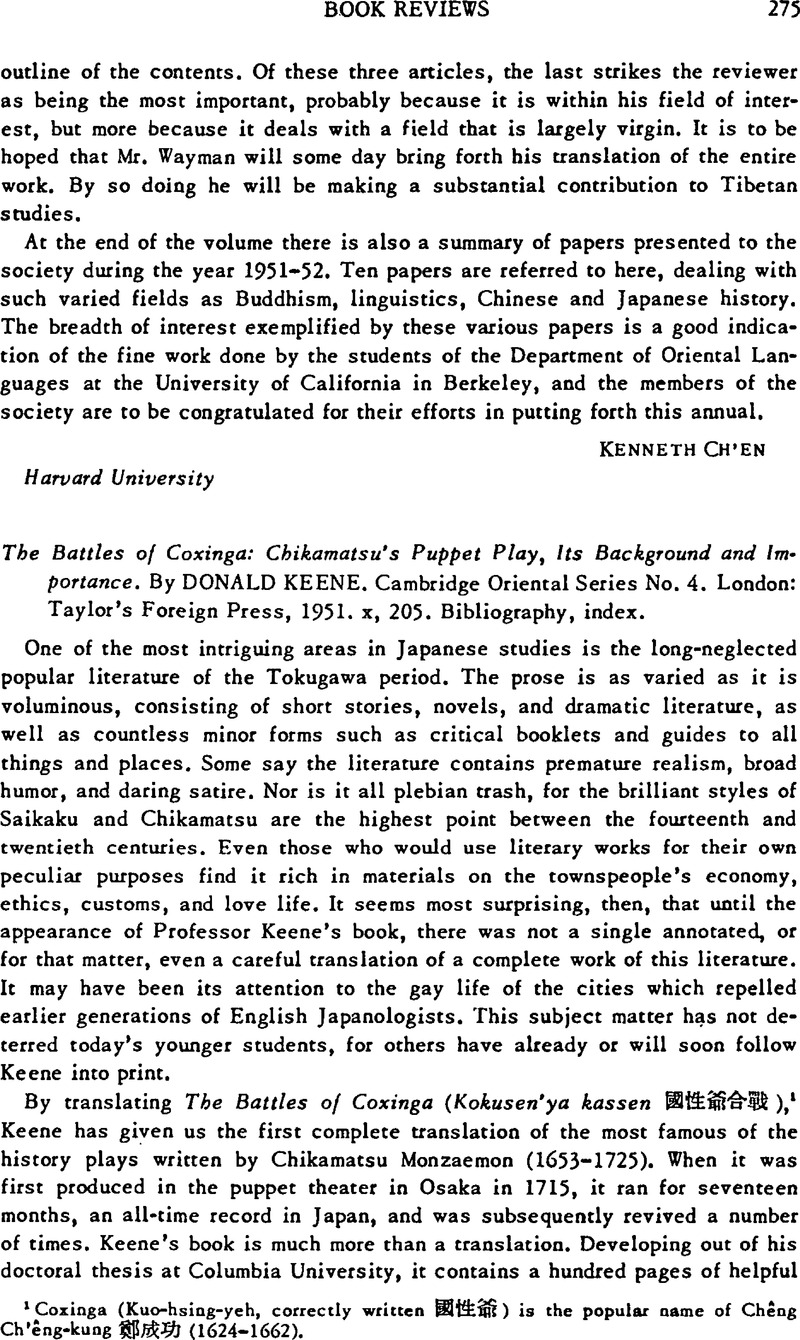No CrossRef data available.
Article contents
The Battles of Coxinga: Chikamatsu's Puppet Play, Its Background and Importance. By Donald Keene. Cambridge Oriental Series No. 4. London: Taylor's Foreign Press, 1951. x, 205. Bibliography, index.
Published online by Cambridge University Press: 23 March 2011
Abstract

- Type
- Book Reviews
- Information
- Copyright
- Copyright © The Association for Asian Studies, Inc. 1955
References
1 Coxinga (Kuo-hsing-yeh, correctly written ![]() ) is the popular name of Chêng Ch'êng-kung
) is the popular name of Chêng Ch'êng-kung ![]() (1624–1662).
(1624–1662).
2 Keene's sources were adequate for factual information, although he might have profited by having available the two most extensive monographs on Chikamatsu: Yasuji, Wakatsuki's Chikamatsu ningyō jōruri no kenkyū (Tokyo: Daiichi Shobō, 1934, 909)Google Scholar and Shigetarō, Utsumi's Ningyō shibai to Chikamatsu no jōruri (Tokyo: Hakusui Sha, 1940, 610)Google Scholar. Kenji, Shuzui's Chikamatsu (Tokyo: Sekai Hyōron Sha, 1949, 191Google Scholar) probably appeared too late to be useful.
3 Keene's material on the historical Coxinga is ample for a discussion of the play. For those interested in further material there is Ishihara Michihirō's Tei Seikō in Tōyō Bunka Sōkan (Tokyo: Sanseidō, 1942, 256Google Scholar), which contains a bibliography of fiftythree Japanese items, mostly modern, as well as Chinese and Western materials.
4 Yasuji, Wakatsuki, (Ningyō) Jōruri shi kenkyū (Tokyo: Sakurai Shoten, 1943, 1008, 154), 196.Google Scholar




